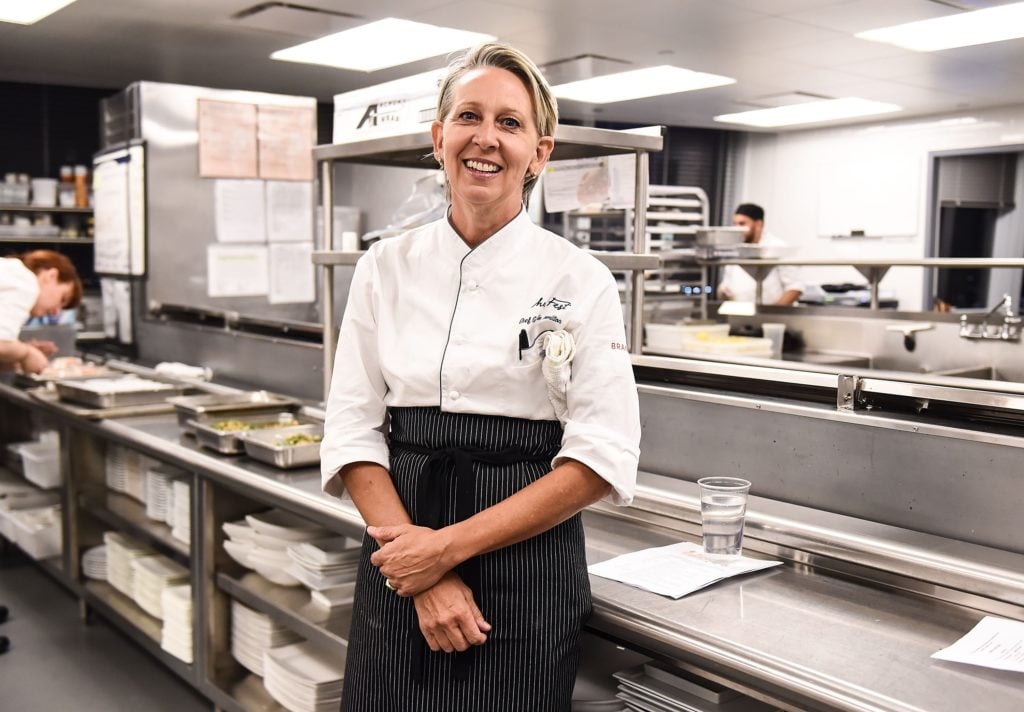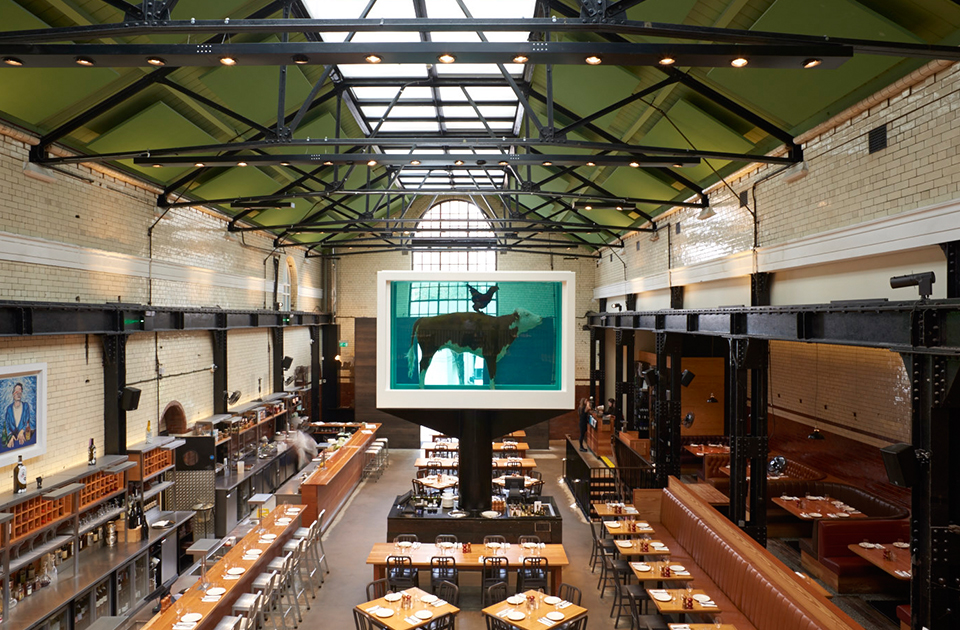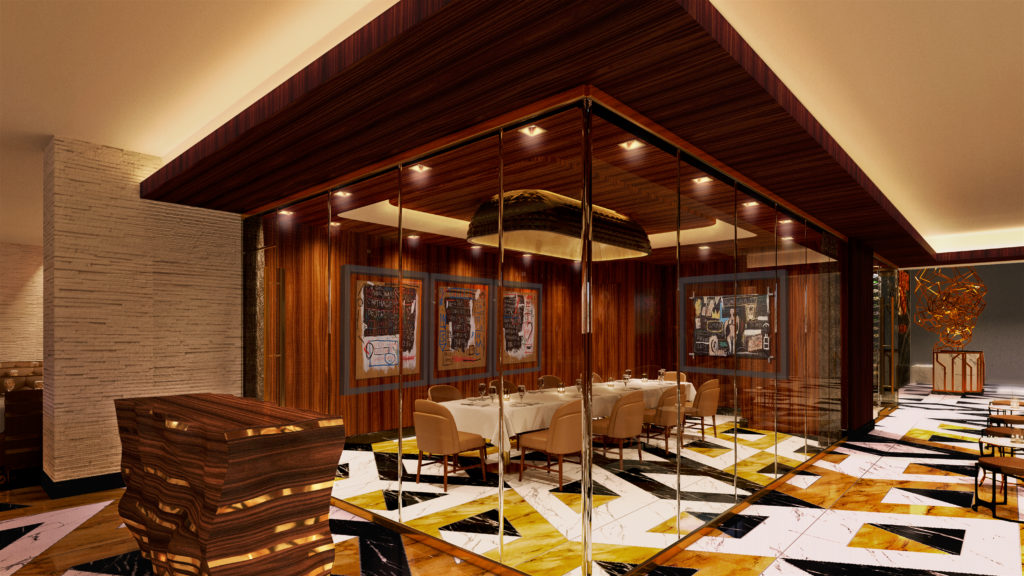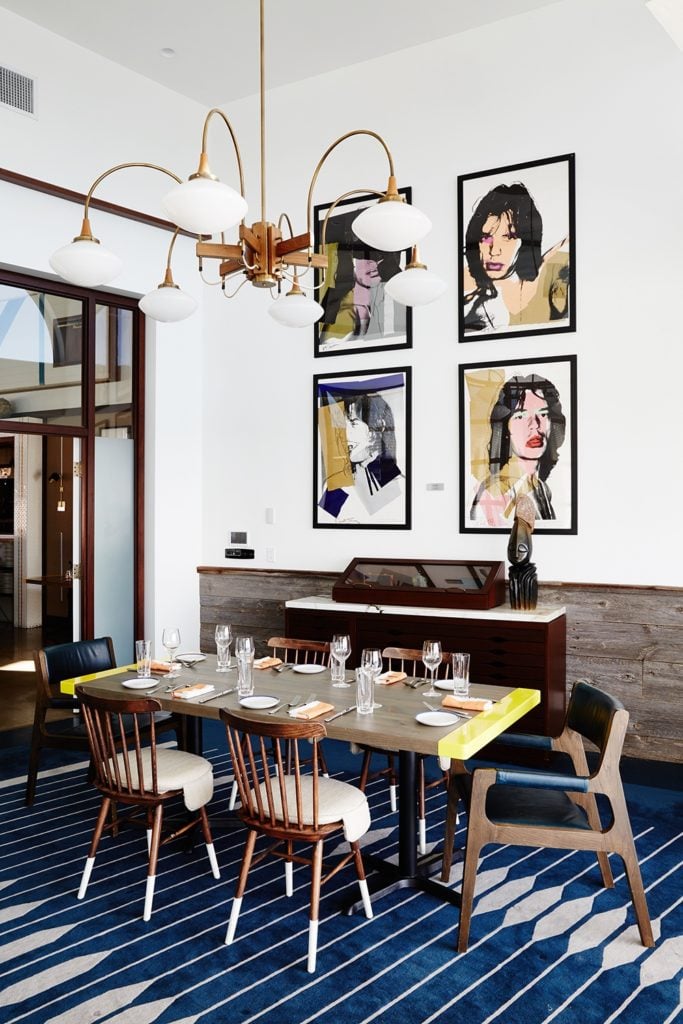Opinion
The Gray Market: Why Chef Gabrielle Hamilton’s Reckoning Offers an Important Example for Gallery Owners (and Other Insights)
Our columnist examines the parallels and possibilities in Gabrielle Hamilton's radical reassessment of her restaurant, Prune.

Every Monday morning, Artnet News brings you The Gray Market. The column decodes important stories from the previous week—and offers unparalleled insight into the inner workings of the art industry in the process.
This week, slicing down to the essentials, even when it hurts…
TABLE FOR TWO
On Thursday, the New York Times Magazine published a poignant—and pointed—essay by Gabrielle Hamilton, chef and founder of the New York bistro Prune, titled “My Restaurant Was My Life for 20 Years. Does the World Need It Anymore?” Her thoughts on her place in the food scene after the shutdown contain a jarring amount of crossover with the existential crisis now facing many gallery owners. And her conclusions stand as a bracing reminder that succeeding, not just surviving, on the other side of this mess may demand questioning everything about why, and how, we all do what we do.
In Hamilton’s mind, Prune has now reached an inflection point familiar to many dealers whose spaces debuted nearer to Y2K than the onset of the social-distancing era. She describes opening her restaurant in the East Village in October 1999, years before the foodie scene as we know it today existed (even in New York), because she was “driven by the sensory, the human, the poetic and the profane—not by money or a thirst to expand.”
And yet, expand she did. First, Hamilton almost impulsively actualized what she labeled the “dreamy proposition” of adding weekend brunch. The meal’s runaway success generated enough capital for her to buy out her investors roughly nine years after launching Prune. She contrasts that choice with the more calculated one she made a few years later to start serving lunch on weekdays primarily so she could offer her staff health insurance. While the latter move may have been partly (even largely) altruistic, it’s also entrepreneurially sensible: good businesses understand the value of continuity, meaning they do what they can to keep good employees in place if the math works.

Damien Hirst’s Cock and Bull (2012) in Hix’s ‘Tramshed’ restaurant. Photo: Hix Restaurants.
However, the feel-good success of Prune’s first decade dissipated during its second, and the story its founder tells locks into eerie alignment with the farewell announcements and op-eds we’ve seen from a wave of small and modestly sized art dealers since the 2008 recession. Here’s Hamilton:
But Prune at 20 is a different and reduced quantity, now that there are no more services to add and costs keep going up. It just barely banks about exactly what it needs each week to cover its expenses. I’ve joked for years that I’m in the nonprofit sector, but that has been more direly true for several years now.
She goes on to recount a moment of clarity that arrived last summer: lying face down on Prune’s floor in coveralls soaked through with food waste, at age 53, using a garden hose to blast a mixture of bleach, dish soap, and degreaser behind the sauté station. Her margins had gotten too parchment-thin to allow her to outsource such a thankless cleaning job, let alone shutter the restaurant for 10 days to do more thorough repairs, as she used to do every July. Prune simply needed every single day’s cash too desperately to slow down or subcontract.
Many, if not most, owners of modest galleries have undoubtedly experienced similar come-to-Jesus moments in the years leading up to the shutdown: exhibiting at yet another art fair that they couldn’t afford to do, but felt they could afford to miss even less; undertaking a precarious install or a punishing art move alone because the budget is somehow even tighter than it used to be; feeling pressure to close a deal with a client or intermediary they don’t trust purely because turning down any transaction, no matter how suspect, might mean the end of the line.
Even the most profitable businesses continually face tough choices and narrow margins for error—narrower than outsiders tend to realize. But when the hardships increase the longer you endure, any striver in any industry arrives at the same dilemma Hamilton did in those grimy coveralls: “It had always been hard, but when did it get this hard?”

Works by Jean-Michel Basquiat at the Scotch 80 Prime steak restaurant. Photo: Courtesy of the Palms Hotel and Casino.
RESERVATIONS AND REIMAGININGS
Since the “grow or go” dynamic has been rigorously analyzed inside and outside the art market for years, I’m not interested in dredging the past for a literal answer to Hamilton’s question here. Instead, like her, I’m more concerned with what comes next in our respective industries.
Given the increasingly unforgiving circumstances of the food-and-beverage space, Hamilton goes on to question whether concerned observers will even be able to tell how many eateries lost during the lockdown met their fate because of the lockdown. Even without a mass stay-at-home order, she argues, a substantial number would have gone under within 16 months from “lack of wherewithal or experience.” Current events will also provide cloud cover for any “weary veteran chef” who finally decides to “quietly walk out the open back door of a building that has been burning for a long time” due to a brutal real-estate market, an ever-growing stampede of competitors, and so much more.
The extraordinary circumstances will obscure outcomes in the gallery sector in the same way. And as she describes in her own case, those who bow out may be just as motivated by a sense of placelessness and inferiority as by hard costs and sacrifices:
In economic terms, I don’t think I could even argue that Prune matters anymore, in a neighborhood and a city now fully saturated with restaurants much like mine, many of them better than mine—some of which have expanded to employ as many as 100 people, not just cooks and servers and bartenders but also human-resource directors and cookbook ghostwriters.
Of course, from hundreds-strong staff sizes to a cadre of specialists who would have seemed unthinkable two decades earlier (think: directors of special (publishing) projects and social-media managers), these specifics are a fact of life in the dealer sector, too. And while I’d argue that growth is not inherently bad—every gallery run well enough to move out of a shoebox is as much a testament to this notion as Prune’s first decade was—they can quickly become unsustainable when larger market forces turn expansion into a nonstop necessity.

Four of Andy Warhol’s Mick Jagger screen prints inside the restaurant at Bermuda’s Hamilton Princess Hotel & Beach Club. Photo by Nicole Franzen. Courtesy the Hamilton Princess Hotel & Beach Club.
Not every aspect of Hamilton’s narrative, or the restaurant business in general, maps onto the art world. The early backing of a consortium of investors, commercial success based on volume service, the physiological reality that people need food in a way they don’t need art—all of these, and more, separate the two industries in undeniable ways.
Yet the business of small restaurants doesn’t need to be identical to the business of small galleries in order to be instructive. Hamilton’s passion and economic circumstances will resonate with almost anyone striving for a career in the arts. And that’s why the perspective she reaches at the end of the piece should be, too.
Weeks of reckoning with Prune’s history during the shutdown have led Hamilton to begin envisioning a dramatically different future for her restaurant—one born out of equal parts romanticism and realism. She describes her cravings to parachute out of the weekend-brunch-industrial complex she unwittingly helped build; to exchange every minuscule two-top table for a more communal setup; to rearrange opening hours and reconstitute her business to recapture the sense of connection with regulars and food that drove Prune’s founding back in 1999.
In short, she’s ready to shred the entire pre-crisis blueprint for what a New York restaurant should be—and as a result, to confront the prospect that there may no longer be a place for Prune in the third decade of the 21st century. If there is, though, she’s fully embraced that it will come from radical transformation.
I think every independent gallery owner now has to confront these same prospects, too. Whether by choice or against their will, not every one of them will return. But when the world reopens, those with the best chance of finding their footing and rhythm again will be those who were willing to re-evaluate every aspect of the way things are done. And as Hamilton proves, that metamorphosis has to start now.
That’s all for this week. ‘Til next time, remember: sometimes it takes the prospect of losing everything to feel like you’re free to do anything.
Follow artnet News on Facebook:
Want to stay ahead of the art world? Subscribe to our newsletter to get the breaking news, eye-opening interviews, and incisive critical takes that drive the conversation forward.

It looks like you're using an ad blocker, which may make our news articles disappear from your browser.
artnet News relies on advertising revenue, so please disable your ad blocker or whitelist our site.
To do so, simply click the Ad Block icon, usually located on the upper-right corner of your browser. Follow the prompts from there.
SHARE

No comments:
Post a Comment